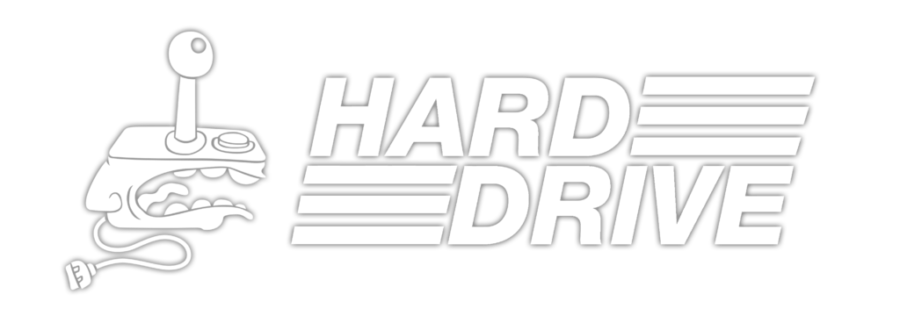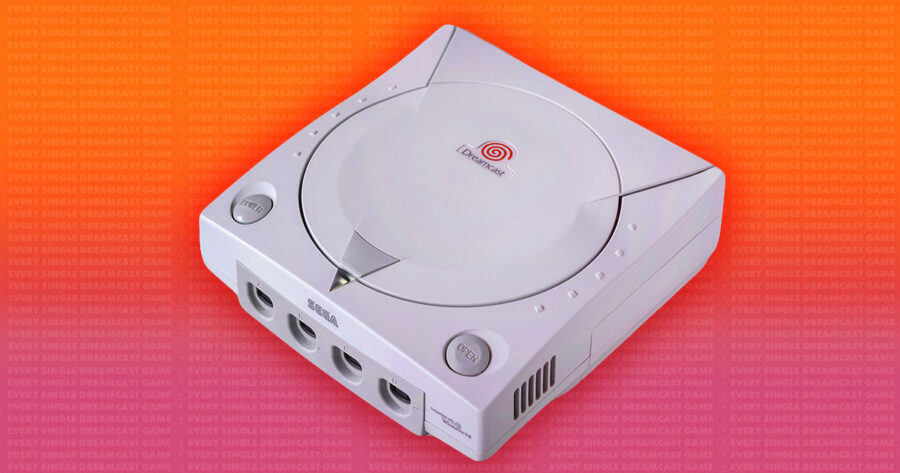#69. NFL Blitz 2000
September 9, 1999
Avalanche Software
Midway Games
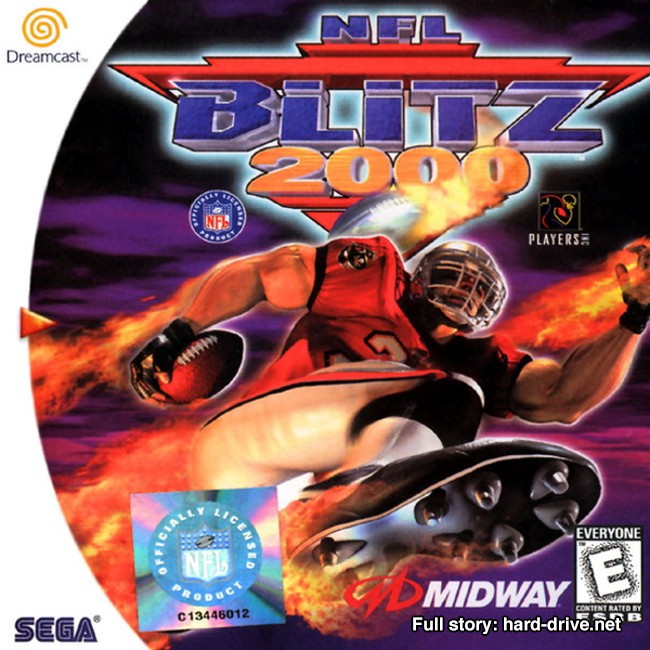
Sure, you’ve got plenty of options when it comes to football games, even on a console as short-lived as the Dreamcast. But why would you want to waste your time strategizing and learning complicated controls when you could be spamming the tackle button in the general direction of your opponent’s unsuspecting receiver? The graphics here are a definite step up from the previous-gen versions, but there are some rough edges. Extra-twitchy input and a CPU that isn’t afraid to blatantly cheat will have you ready to pile drive your controller. Luckily, you can just blow off steam in the game itself by elbow-dropping your opponent after he intercepts your game-winning touchdown pass. Win or lose, you’re in for a good time. — K. Duggan
#68. Sword of the Berserk: Guts’ Rage
March 15th, 2000
ASCII
Eidos Interactive
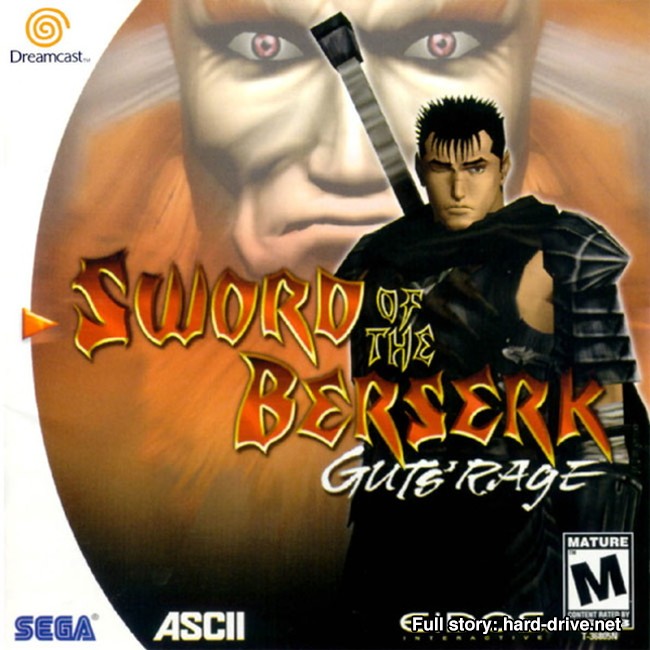
Berserk Millennium Falcon Arc: Chapter of the Flowers of Oblivion, otherwise known by its generically nondescript name Sword of the Berserk: Guts’ Rage, is an action slash-em-up game based on the Berserk anime and manga. It’s not just a cheap cash-in on a fairly popular media property, though. The game’s original storyline is written by the late, great creator of Berserk, Kentaro Miura himself– a certified GOAT if ever there was one. It also includes music from legendary composer Susumu Hirasawa, whose work was also featured in several of the Berserk anime adaptations, because if at first you don’t succeed: try, try again. Or don’t, that last one was pretty bad.
The game is full of bloated cutscenes right from the get go. There’s a lot of information to take in as you learn about a guy who is literally called Ballsack. The gameplay is decent, and incorporates Guts’ full arsenal of weapons, which of course includes his massive fucking sword. You have to choose wisely when to swing it, though. Certain hallways and areas are too narrow, forcing you to rely on other weapons like your crossbow or arm cannon, which is a clever workaround to make people want to utilize some of Guts’ less iconic weapons. The graphics do leave much to be desired though, landing pretty firmly in the uncanny valley. I never realized how creepy Puck was until I saw his naked floating body rendered in Dreamcast graphics. — K. Podas
#67. Project Justice
May 16, 2001
Capcom
Capcom
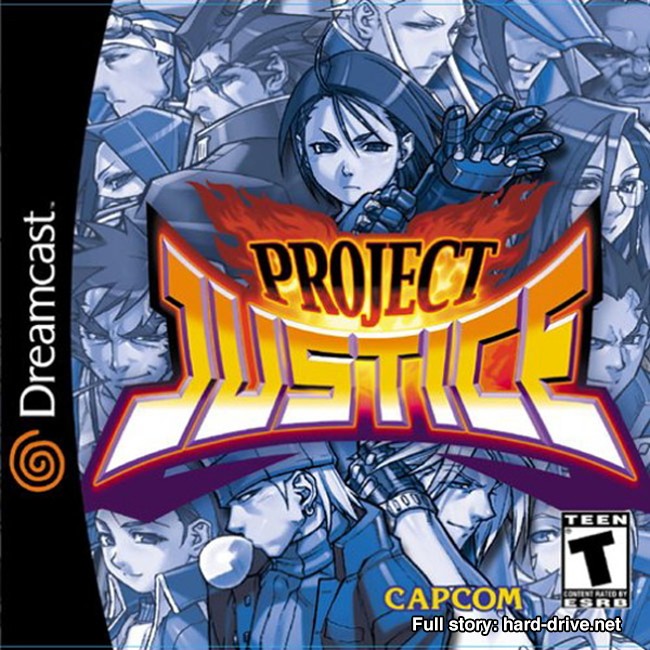
Project Justice is the 2001 sequel to the 1998 3D fighter Rival Schools: United By Fate. This was the era of Capcom willing to try different things. The developer wasn’t content to simply dump all of their time and effort into Street Fighter and players were able to experience all sorts of off-the-wall fighters from the industry behemoth. With different schools going to war with one another, teachers and students alike band together utilizing their respective skills to rise to the top. As such, there are tons of colorful characters and abundant stereotypes and tropes in play. You want a teacher channeling his inner Ryu? You got it. How about a domineering class president? Consider it done. If there’s a school trope, Project Justice has it.
Players fight in tandem with two teammates, which allows for some unique power-ups and combos. It’s a ton of fun all around from the core gameplay to the graphics and settings. It’s a nice break from over-the-top games where you start as a simple farmhand but are killing a god 60 hours later. The early 2000s were a great time for fighting fans that wanted to beat up their friends and Project Justice is the embodiment of that time. — C. Dawson
#66. Virtua Tennis
July 11th, 2000
Sega AM3
Sega

If you want to play Tennis on the Sega Dreamcast, well, come and get it, buddy: Virtua Tennis is here. It’s a simple yet surprisingly refined package, giving you pretty much all you could ever want out of the game, which is to say, again, Tennis on the Sega Dreamcast.
Believe it or not, but this is an arcade port, which is probably why the game’s tight controls and surprisingly good graphics excel above its peers. Characters control about as well as you could hope for, and the visuals are pretty good too, showing off the Dreamcast’s graphical prowess when that was impressive for a brief window of time. Faces, however, are not quite there yet, looking more like melted Halloween masks on otherwise fully-rendered tennis player bodies.
Overall, Virtua Tennis is pretty bare bones, but somehow that feels appropriate given how up-front they are with their tasteful minimalist theming. World Circuit Mode offers a bit more of a robust experience allowing you to earn money from matches which you can in turn spend in the game’s shop to purchase unlockable characters, stages, tennis wear, and more. It’s a fun game for a Saturday afternoon when you’ve got some time to kill, but not much else. — K. Podas
#65. NBA2K1
October 31, 2000
Visual Concepts
Sega
 Not content to merely update their well received basketball debut, Visual Concepts introduced a bunch of new elements to the already impressive 2K series here, namely Street Mode, Online Play, and Legends teams. These are all crucial additions. What are they all worth? Easy. 15 spots on the list. — M. Roebuck
Not content to merely update their well received basketball debut, Visual Concepts introduced a bunch of new elements to the already impressive 2K series here, namely Street Mode, Online Play, and Legends teams. These are all crucial additions. What are they all worth? Easy. 15 spots on the list. — M. Roebuck
#64. Tech Romancer
June 15, 2000
Capcom
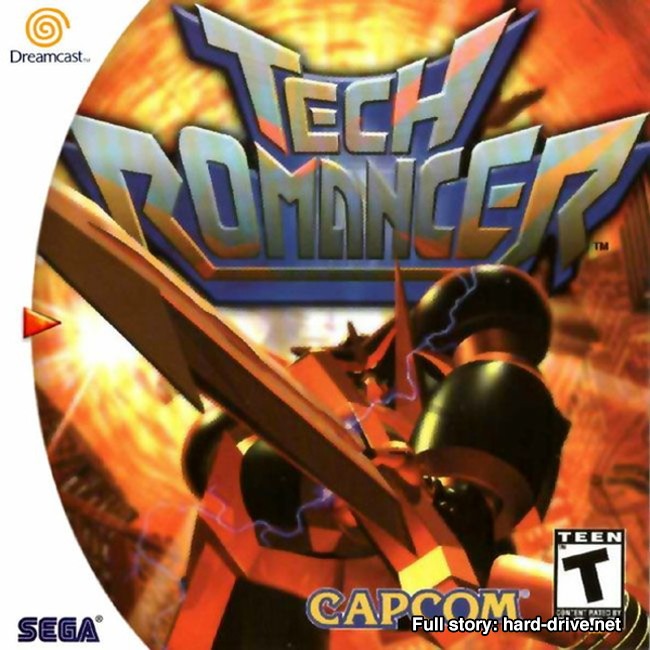
Thanks to a string of successful reviews, Hard Drive Reviewer was enjoying their time playing through the history of Sega’s greatest console. Way too many fighting games got played, bad cut-scenes were sat through, and scores out of 100 were recorded. It seemed that things were going well for the prolific game reviewer.
Searching for their next game, Hard Drive Reviewer settled on a Capcom game they knew nothing about. Little did they know that they’d just found…
“TECH ROMANCER: ANOTHER DREAMCAST FIGHTING GAME”
NEXT TIME ON “HARD DRIVE’S DREAMCAST REVIEWS”
After reviewing Tech Romancer, Hard Drive Reviewer looks to continue playing it in the future, even if they aren’t good at it. Will Hard Drive Reviewer be able to see all of the awesome and entertaining mech-anime-like stories given to each character in Story Mode of Tech Romancer? Can they get good enough to beat the entire game, even though each character has a myriad of powerful special attacks to learn? Tune in next time for Hard Drive’s Dreamcast Reviews! — J. Ruggiero
#63. Giga Wing
February 22, 1999
Takumi Corporation
Capcom
 If you like your vertical-scrolling shmups to have lots of explosions with little thinking to get in the way, then I have just the game for you. Giga Wing’s old school graphics might look like they belong on the Saturn, but they’re charming and frenetic enough that you won’t care too much. As one of four playable pilots, you’ll weave your way through an incomprehensible story told through poorly-translated textual cutscenes. Basically, there’s a powerful magical medallion that’s…bad? I’m not certain, but I think we’re anti-medallion. It really doesn’t matter, and it gets out of your way quickly so you can get back to zooming around and mashing the A-button. There’s a reflective shield mechanic that I could never master, but it didn’t really matter, because the game allows for infinite continues. High score chasers can restart runs to their hearts’ content, while schlubs like me can roll right through. — K. Duggan
If you like your vertical-scrolling shmups to have lots of explosions with little thinking to get in the way, then I have just the game for you. Giga Wing’s old school graphics might look like they belong on the Saturn, but they’re charming and frenetic enough that you won’t care too much. As one of four playable pilots, you’ll weave your way through an incomprehensible story told through poorly-translated textual cutscenes. Basically, there’s a powerful magical medallion that’s…bad? I’m not certain, but I think we’re anti-medallion. It really doesn’t matter, and it gets out of your way quickly so you can get back to zooming around and mashing the A-button. There’s a reflective shield mechanic that I could never master, but it didn’t really matter, because the game allows for infinite continues. High score chasers can restart runs to their hearts’ content, while schlubs like me can roll right through. — K. Duggan
#62. Dino Crisis
November 15, 2000
Capcom Production
Capcom
 It may seem reductive to call Dino Crisis “Resident Evil With Dinosaurs,” and so in order to bait out potential rage comments for engagement on the article, that’s how I’ll be referring to it for the rest of this entry. Resident Evil With Dinosaurs, helmed by Resident Evil Without Dinosaurs pioneer and horror legend Shinji Mikami is like Resident Evil, but with dinosaurs; it has the same fixed camera angles, tank controls and slow, dread-inducing door-opening animations. But tangling with dinosaurs is inherently different than dealing with zombies and so it also features some evolutions on the classic RE formula to help you keep up with these much faster enemies, such as being able to move and hold your weapon at the same time and being able to “mix” and customize equipment to create superior healing and poison darts. (This — as far as I can see is the first time such a mechanic was implemented in one of these Capcom horror games and is something Mikami would famously bring back for Resident Evil 4.)
It may seem reductive to call Dino Crisis “Resident Evil With Dinosaurs,” and so in order to bait out potential rage comments for engagement on the article, that’s how I’ll be referring to it for the rest of this entry. Resident Evil With Dinosaurs, helmed by Resident Evil Without Dinosaurs pioneer and horror legend Shinji Mikami is like Resident Evil, but with dinosaurs; it has the same fixed camera angles, tank controls and slow, dread-inducing door-opening animations. But tangling with dinosaurs is inherently different than dealing with zombies and so it also features some evolutions on the classic RE formula to help you keep up with these much faster enemies, such as being able to move and hold your weapon at the same time and being able to “mix” and customize equipment to create superior healing and poison darts. (This — as far as I can see is the first time such a mechanic was implemented in one of these Capcom horror games and is something Mikami would famously bring back for Resident Evil 4.)
It’s aged about as well as any of these games that have you move like a human forklift have. It’s overshadowed by Resident Evil by virtue of zombies and the like just being scarier, and still being only marginally more action-oriented than survival horror, but it makes a genuine attempt to make dinosaurs scary and occasionally succeeds! Every time a raptor bursts into the same claustrophobic room as you — it seriously does trigger a real fight-or-flight response, and it caps off with some pretty awesome and intimidating showdowns with the game’s dinosaur equivalent of Mr. X (Mr. Rex, if you will.)
Still, though. Nothing is scarier than having to navigate a world so big and winding when you control like that. — B. Waters
#61. Crazy Taxi 2
May 28, 2001
Hitmaker
Sega
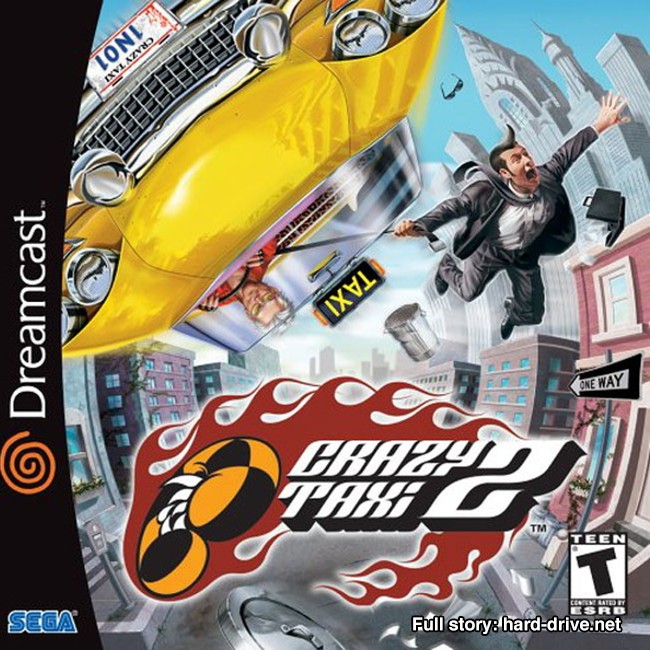
I’ll tell you what’s crazy. Sega trying to pass this off as a full fledged sequel! It’s Crazy Taxi, again. Your car can jump now. You can pick up multiple passengers at once. Besides that, it’s just more Crazy Taxi. The game is set in a version of New York rather than San Francisco, but it’s emptier and less interesting to look at. It often feels like you’re driving around the city from Sonic Adventure. It’s just missing any kind of surprise, something that would make you grab this one over the first game. But you can take people to the Hard Rock Cafe, and if that doesn’t bring you back to 2001, I don’t know what will! — S. Finkelstein
#60. NFL2K
September 9, 1999
Visual Concepts
Sega
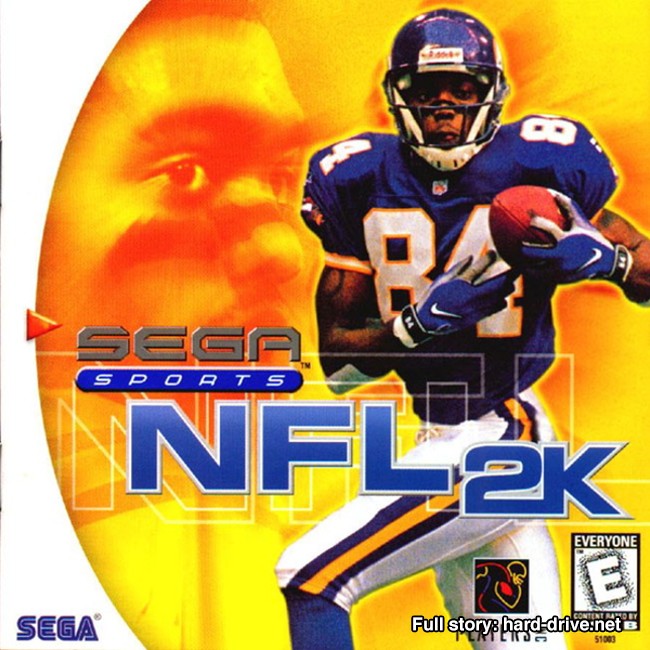 This launch title came out at a time when the football place was as crowded as a big old crowd, and Visual Concepts’ impressive title immediately set itself apart. Top notch motion capture and a physics based collision engine make this a game that feels infinitely more alive than QB Club or Madden. There’s a pulse to this 25 year old sports game, a genuinely realistic momentum. This isn’t like the old Joe Montana SEGA games where I’d run a dozen end-arounds and score 28 points in a half. This is more of a jarringly realistic, follow the blocker into the hole or Reggie White will give you a Rock Bottom type of game. I love it.
This launch title came out at a time when the football place was as crowded as a big old crowd, and Visual Concepts’ impressive title immediately set itself apart. Top notch motion capture and a physics based collision engine make this a game that feels infinitely more alive than QB Club or Madden. There’s a pulse to this 25 year old sports game, a genuinely realistic momentum. This isn’t like the old Joe Montana SEGA games where I’d run a dozen end-arounds and score 28 points in a half. This is more of a jarringly realistic, follow the blocker into the hole or Reggie White will give you a Rock Bottom type of game. I love it.
It’s a bummer that there was no franchise mode, and the stadium is packed with sidelines and crowds that don’t move in the slightest. Additionally, the series was a year away from the online play that made its successor one of the best reviewed games of all time. Yeah, not just sports games, but all-time best reviewed games. More on that later, but that’s just to say this is a mildly inferior version of one of the all-time great video games, so it’s still very good! — M. Roebuck
#59. Railroad Tycoon II
July 31, 2000
PopTop Software
Gathering of Developeres
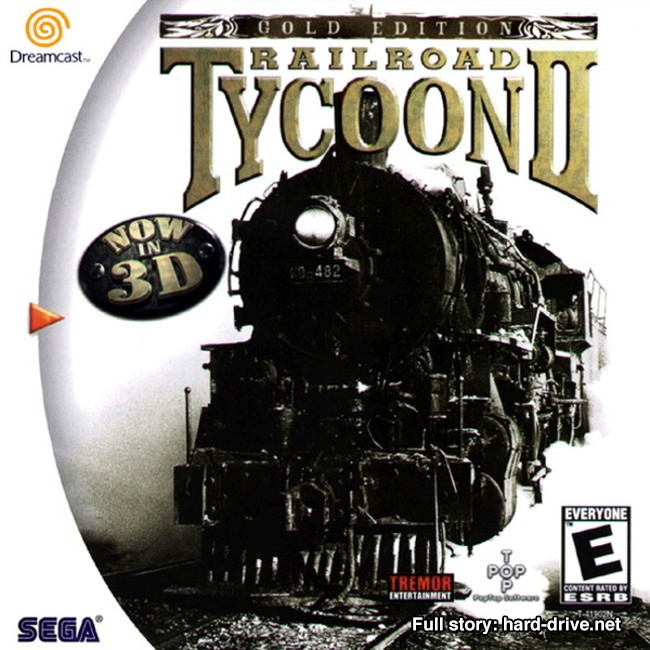 I did not play this game as a child, and now in writing this review I can’t tell you just how happy I am about that. I was a dumb kid, and this game is hard. If I had had access to a railroad management simulator at age nine it wouldn’t have lasted past the tutorial stage before the inevitable controller smashing fit of frustration. But now, after years of therapy and an appreciation for just how expensive game hardware is, I gotta tell you Railroad Tycoon II is surprisingly fun. Yes, it’s at times still prohibitively difficult (resource management has never been a strength of mine), but at least now it’s a challenge I’m happy to work on and not just come up with another excuse for my parents as to why there are new holes in the drywall again. — J. Knapp
I did not play this game as a child, and now in writing this review I can’t tell you just how happy I am about that. I was a dumb kid, and this game is hard. If I had had access to a railroad management simulator at age nine it wouldn’t have lasted past the tutorial stage before the inevitable controller smashing fit of frustration. But now, after years of therapy and an appreciation for just how expensive game hardware is, I gotta tell you Railroad Tycoon II is surprisingly fun. Yes, it’s at times still prohibitively difficult (resource management has never been a strength of mine), but at least now it’s a challenge I’m happy to work on and not just come up with another excuse for my parents as to why there are new holes in the drywall again. — J. Knapp
#58. Vigilante 8: Second Offense
December 22, 1999
Luxoflux
Activision
 Somewhere between Swing music and Y2K hysteria, vehicular combat games were all the rage for a few years in the late 90s. Twisted Metal was the unquestioned king of the genre, and a few games fought for its scraps, with Vigilante 8 being assuredly not the worst among them. This sequel’s lineup remedies the same-y cars of the first, but both games feature great levels and ‘70s vibes, a very inspired choice to set this game apart from the Rogue Trip‘s and Carmageddon‘s of the world. Know what else sets it apart? This game has one of the all time great Video Game Title Tracks. It all adds up to quite an impressive game, honestly. I missed this series when I was a kid, but if I’d owned this game (or the original, honestly), as a youngster, this Twisted Metal-loving sumbitch would’ve played the hell out of it. — M. Roebuck
Somewhere between Swing music and Y2K hysteria, vehicular combat games were all the rage for a few years in the late 90s. Twisted Metal was the unquestioned king of the genre, and a few games fought for its scraps, with Vigilante 8 being assuredly not the worst among them. This sequel’s lineup remedies the same-y cars of the first, but both games feature great levels and ‘70s vibes, a very inspired choice to set this game apart from the Rogue Trip‘s and Carmageddon‘s of the world. Know what else sets it apart? This game has one of the all time great Video Game Title Tracks. It all adds up to quite an impressive game, honestly. I missed this series when I was a kid, but if I’d owned this game (or the original, honestly), as a youngster, this Twisted Metal-loving sumbitch would’ve played the hell out of it. — M. Roebuck
#57. NBA2K2
October 23, 2001
Visual Concepts
Sega
 Not as drastic an improvement as 2K1 was over its predecessor, nevertheless there’s a lot of impressive little additions here. Better game flow, better AI, better picture of AI on the cover, it’s just one year better. What’s that worth? Easy. Eight spots on the list. — M. Roebuck
Not as drastic an improvement as 2K1 was over its predecessor, nevertheless there’s a lot of impressive little additions here. Better game flow, better AI, better picture of AI on the cover, it’s just one year better. What’s that worth? Easy. Eight spots on the list. — M. Roebuck
#56. Record of Lodoss War
March 14, 2001
Neverland
Conspiracy Entertainment
 This should’ve shipped in a plain white cardboard box with DUNGEON CRAWLER stenciled on the front. In the first 45 minutes of Record of Lodoss War, subtitled Advent of Cardice in Japan, it runs through so many fantasy game clichés right in a row that I thought it’d be a parody. It isn’t. You play as an ancient warrior with amnesia who’s been resurrected by an elderly wizard in order to stop the resurrection of an evil goddess. You may recognize this as the plot of at least three other games that I can think of offhand. Your quest naturally requires you to kill thousands of fantasy monsters by mashing the B button at them, and eventually, you team up with the main characters from the Record of Lodoss War anime. This is your chance to tank for Deedlit, fanboy. If that sentence doesn’t make any sense to you, you are not in this game’s target audience.
This should’ve shipped in a plain white cardboard box with DUNGEON CRAWLER stenciled on the front. In the first 45 minutes of Record of Lodoss War, subtitled Advent of Cardice in Japan, it runs through so many fantasy game clichés right in a row that I thought it’d be a parody. It isn’t. You play as an ancient warrior with amnesia who’s been resurrected by an elderly wizard in order to stop the resurrection of an evil goddess. You may recognize this as the plot of at least three other games that I can think of offhand. Your quest naturally requires you to kill thousands of fantasy monsters by mashing the B button at them, and eventually, you team up with the main characters from the Record of Lodoss War anime. This is your chance to tank for Deedlit, fanboy. If that sentence doesn’t make any sense to you, you are not in this game’s target audience.
I’m being facetious, but Advent of Cardice isn’t bad. It’s ugly, but some real thought and care was put into it. It’s a perfectly decent, if simple, retro hack-and-slasher. What I’m wondering is if it’s deliberately trying to do the same thing as the Record of Lodoss War series did, but in a different venue. Lodoss is famous for being an adaptation of what must’ve been the most stereotypical Dungeons & Dragons campaign ever run, but manages to make all the knights, elves, and dragons feel new again by playing it all with complete sincerity. It’s the sort of thing you watch to remember why you got into fantasy in the first place.
By the same token, Advent of Cardice is the sort of dungeon crawler that was already a little dated by 2001, but moves quickly, plays well, and doesn’t treat its subject matter with any sort of irony. That might be its best feature. — T. Wilde
#55. Resident Evil 2
December 6, 2000
Capcom
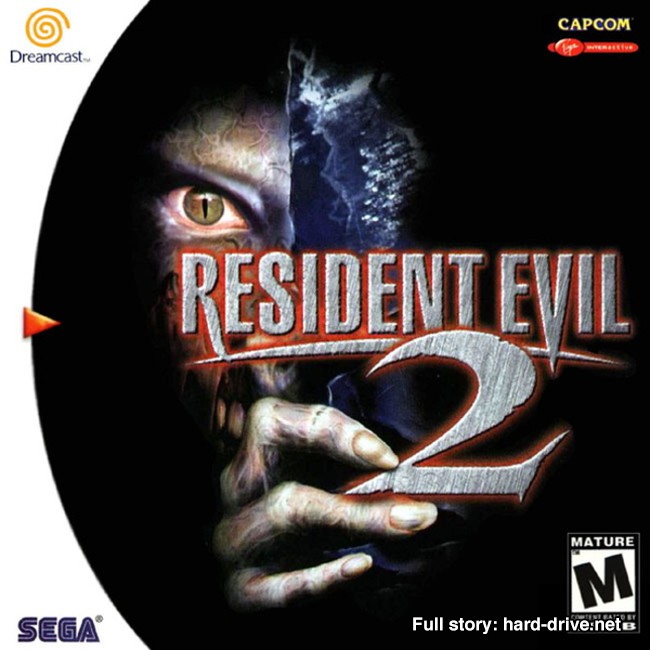 At this point, you’ve either played the original 1998 Resident Evil 2 or you’re determined not to do so, despite 25 years of think pieces, documentaries, retro roundups, prophetic dreams, and raving street madmen all telling you that you should. Stop being stubborn and play RE2. Join us.
At this point, you’ve either played the original 1998 Resident Evil 2 or you’re determined not to do so, despite 25 years of think pieces, documentaries, retro roundups, prophetic dreams, and raving street madmen all telling you that you should. Stop being stubborn and play RE2. Join us.
Having said that, the Dreamcast version of RE2 is… well, it’s fine. It’s better than no RE2 at all. It doesn’t run badly on DC, but it’s a tweaked port of the 1999 Windows edition, which features a weird collection of adjustments over the original PlayStation game. It features a new minigame, Extreme Battle, which only manic completionists will ever want to play; two additional ultra-hard difficulties, which are strictly for masochists; and a new Dreamcast-exclusive feature where your character’s current health status is displayed on your VMU.
RE2 on Dreamcast also censors the original game’s elaborate death scenes. If you die, the game simply fades to black, rather than making you watch as Mr. X curbstomps your character. Whether that’s a drawback or not depends on who you are as a person. I’m not going to judge you. Either way, though, the Dreamcast port of RE2 is in a strange place. It’s got a couple of bonuses that the original game didn’t, but it doesn’t have the replay value or extra lore of the N64 version. It’s still worth your time, but if you’re trying to choose which version of RE2 to play, the only reason to go for the Dreamcast edition is if it’s the only one you have available. — T. Wilde
#54. Gunbird 2
November 15, 2000
Psikyo
Capcom
 There are a lot of great arcade shooters (shmups, if you’re nasty) on Dreamcast, although most of the best ones weren’t released in the US. Psikyo’s Gunbird 2 stands out from the pack by, counterintuitively, not trying to reinvent the wheel. There were a bunch of shmups around this point that were messing with the formula by making enemy fire both a danger and a resource, like Giga Wing’s bullet reflector or the color-shifting mechanic in Ikaruga. Gunbird 2, by comparison, is just a solid bullet hell game, with a blend of pixel-art and CGI graphics, a steep difficulty curve, and a translation that’s just bad enough to seem deliberate. It’s also really stupid, even by comparison to the original Gunbird, with a story that revolves around bringing three artifacts to a giant Aztec teddy bear, who is also God, to get a single wish.
There are a lot of great arcade shooters (shmups, if you’re nasty) on Dreamcast, although most of the best ones weren’t released in the US. Psikyo’s Gunbird 2 stands out from the pack by, counterintuitively, not trying to reinvent the wheel. There were a bunch of shmups around this point that were messing with the formula by making enemy fire both a danger and a resource, like Giga Wing’s bullet reflector or the color-shifting mechanic in Ikaruga. Gunbird 2, by comparison, is just a solid bullet hell game, with a blend of pixel-art and CGI graphics, a steep difficulty curve, and a translation that’s just bad enough to seem deliberate. It’s also really stupid, even by comparison to the original Gunbird, with a story that revolves around bringing three artifacts to a giant Aztec teddy bear, who is also God, to get a single wish.
If you’re about the shmup life, Gunbird 2 is a good example of the genre, from one of the late, great companies in the space. It’s short, but it has a lot of difficulty levels to customize the experience, and a big cast full of characters who play very differently from one another.
It’s worth ending this piece on a content warning, though. Back in the day, I had a lot of fun with Gunbird 2. My college buddies and I discovered that it’s got a couple of dozen different arcade endings, based on every possible combination of playable characters, and each ending is somehow even dumber than the one before it. Science said it couldn’t be done.
The exceptions all involve Aine, a secret character who’s a guest star from Psikyo’s Sengoku Ace. (The other secret character, Morrigan from DarkStalkers, appears to be exclusive to the Dreamcast port.) While Aine’s co-op endings are censored in the US Dreamcast version of Gunbird 2, they all involve him banging another male character, none of whom seem to be cool with it, and it’s played for laughs. If you aren’t up for some comedic gay anime dubcon, don’t pick Aine in co-op. — T. Wilde
#53. The King of Fighters: Evolution
December 13, 2000
SNK
Agetec
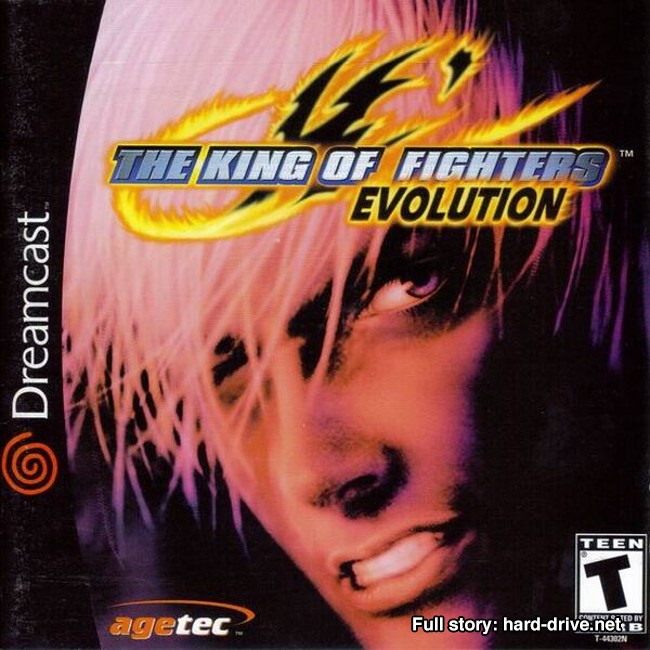 The King of Fighters series is one that I felt never got enough love. Its fighters are varied and a genuine joy to play thanks to the solid gameplay. The bar of entry is much lower when compared to more technical fighters like Street Fighter but that doesn’t mean it can’t be complex. Instead, like singers, it simply has a different range.
The King of Fighters series is one that I felt never got enough love. Its fighters are varied and a genuine joy to play thanks to the solid gameplay. The bar of entry is much lower when compared to more technical fighters like Street Fighter but that doesn’t mean it can’t be complex. Instead, like singers, it simply has a different range.
Evolution is a gorgeous 2.5D fighter whose graphics have more of a painterly quality that is simply engrossing. There are so many details in the characters and stages that each fight is a feast for the eyes.
Where Evolution struggles is its lack of commitment. Assisting characters pop in and unleash an attack. However, these characters can be hit by opponents, negating the attack, or miss entirely. There’s a limited number of times they can be used across rounds and the damage they can inflict is minimal. Additionally, by reducing the number of fighting systems from previous entries, Evolution doesn’t cater to a wider audience.
Evolution is a very enjoyable game, but it doesn’t do enough to stand out from the crowd. Games aren’t cheap and time is a precious commodity. The series has grown as it has aged; this entry just happened to be one where nothing truly phenomenal happened. — C. Dawson
#52. House of the Dead 2
September 9, 1999
Sega
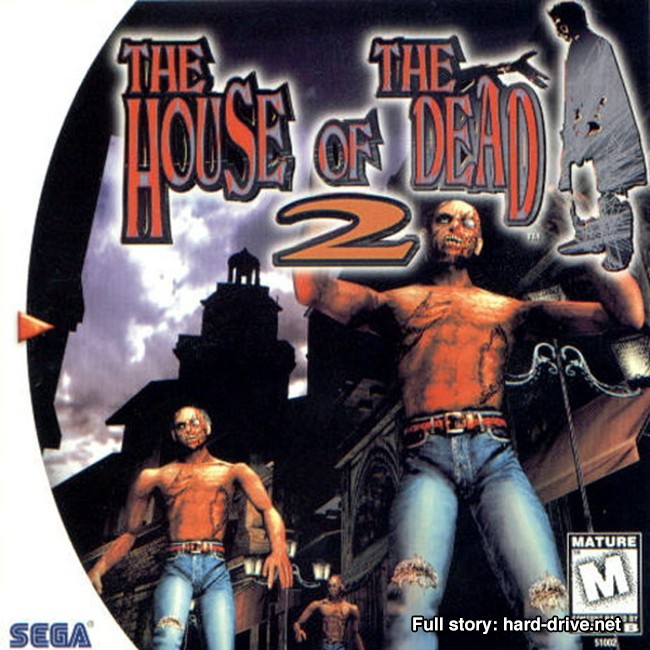
As an arcade rail shooter, House of the Dead 2 is competent. Its light gun mechanics are reasonably fun, though not particularly groundbreaking or memorable. As an audiovisual experience, however, it’s a masterpiece. The game is full of stilted voice acting and inscrutable story beats with zero concept of tone, and it fucking rules. Every line is delivered as deadpan as possible, and every moment of real tragedy is instantly and hilariously sniped by green slime and hulking beasts. What’s that, Timmy? Your mother is lying dead in a puddle of her own viscera? Too bad — those sewer eels won’t shoot themselves!
It’s zombie eels all the way down; classic humanoid zombies were just not enough for SEGA, apparently. The endless procession of freaks continues with some truly bizarre boss fights, including a zombie goblin who talks like they’ve ingested twelve helium balloons. You’ll also tussle with The Hierophant, a weirdly hunky fish warrior who throws zombie piranhas at you while doing a constipated little dance every time you shoot him.
The real show-stealer is the game’s antagonist, Goldman. He’s some kind of suave, Bond-villain businessman who is apparently in full support of the zombie flesh-eating situation. All of his lines are delivered with the emotionality of a stale fart trapped in a bottle for thirty years, and the script itself makes hearing him talk truly an out-of-body experience. When confronted for his crimes, Goldman delivers an incomprehensible monologue in which he reveals his true motives:
“I’m fully aware of what I’m doing! Can’t you see? Man committed a sin… disturbing the life cycle of nature… the original sin that man is responsible to… To protect the life cycle, I have made a creature to rule over mankind!”
Perhaps “the real sin that man is responsible to…” is letting the Dreamcast die, when it featured such masterpieces as this. — L. Fisher
#51. StarLancer
November 22, 2000
Digital Anvil
Crave Entertainment
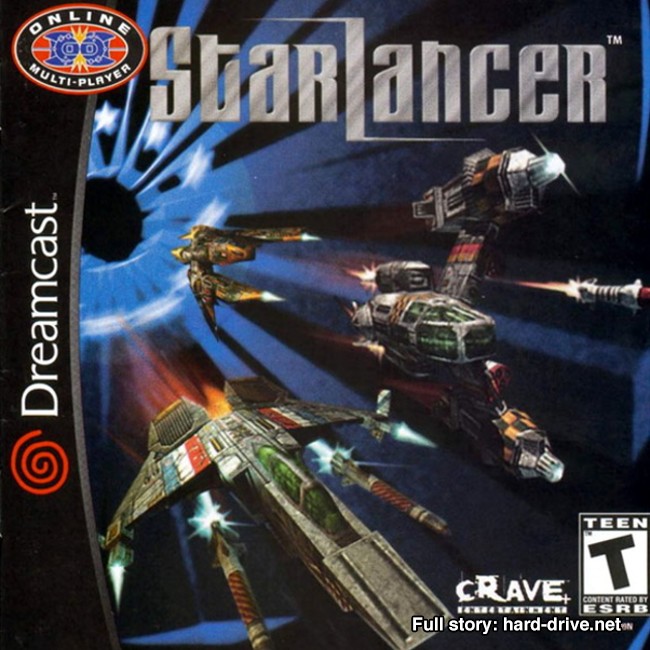
StarLancer is one of those titles that I want to spend more time with after the review process is over with. I am absolute dogshit at it, but I would love to sit down and really spend the time and effort to get better at it. I think what makes me want to do that is how well the developers crafted a living and breathing world. There’s chatter on the comms that is actually relevant to the action playing out. There’s a carrier full of crew that can be talked to and whose reactions will change depending on the player’s rank. With everything being fully voiced and FMV talking heads, it’s a very immersive experience.
That’s not to say that the acting and world carry StarLancer. The action is top notch thanks to competent controls, incredible visuals, and exciting dogfights. In nails the feeling of being in a Tie Fighter or X-Wing with the ruggedness of something like Wing Commander or StarCraft. StarLancer is one of those rare gems that popped up during the brief lifespan of the Dreamcast. Simply playing it makes you feel like a part of a tiny club that not many know about and even fewer are in. — C. Dawson
